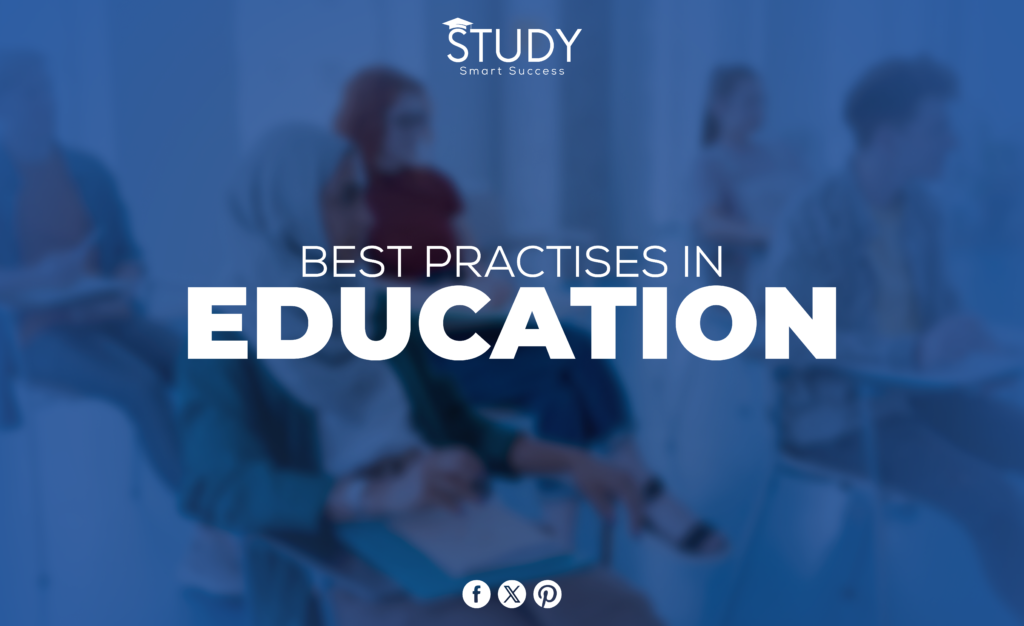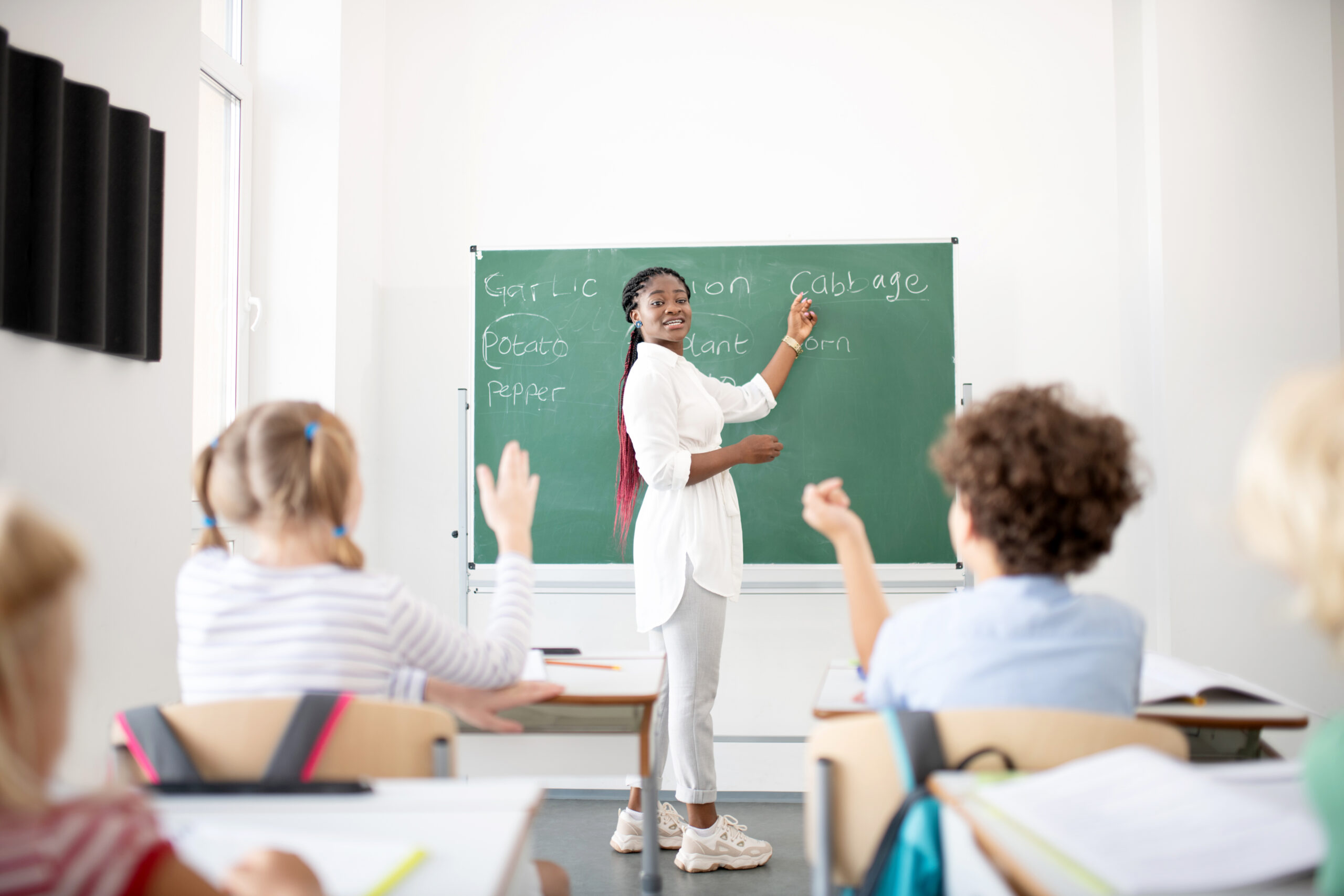There are always new changes in education because it has to prepare the leaders, inventors, and guardians of tomorrow’s world. Best practices in this area of education change how information is taught in ways that meet the needs and boost the intelligence of the next generation. In this detailed guide, we will discuss essential techniques and programs that have been shown to improve learning, support individual growth, and teach values beyond the classroom.
If you’re interested in evidence-based practice in education, learn more details about it.
Importance of Best Practices in Education
The education system is constantly changing to keep up with new tools, changes in the world, and what people expect. So, it’s essential to keep up with the latest education trends to ensure that students learn the skills and information they will need in their future jobs.
Teachers can make a fun learning setting that encourages critical thought, problem-solving, and imagination by using suitable teaching methods and tactics. These activities not only get students ready for school but also teach them valuable skills that they can use in real life.
Additionally, the very best education methods also support diversity and inclusion. Teachers can make a better setting for all students to do well by knowing how students learn and meeting each one’s needs.
Techniques and Programs for Effective Education
Project-Based Learning:
Project-based learning is a way to teach that gets students to do real-life chores or projects to learn. Students can be involved in the learning process and use what they’ve learned to solve real-world problems with this method.
Students learn to think critically, work together, and handle their time by doing projects. This method encourages creativity and new ideas because students are free to explore and share their ideas differently.
Flipped Classroom:
Traditional ways of teaching are turned around in a flipped classroom, and students learn at home through online classes or other engaging tools. Then, there are talks, group games, and hands-on learning opportunities during class time.
Flipped classes have been shown to get students more involved, help them learn at their own pace, and get them to work together. Additionally, this method lets teachers tailor each student’s learning based on their specific requirements and growth.
Inclusive Education:
Ensuring that all students, even those with disabilities or other differences, have the same access and opportunities in school is what inclusive education means. It helps create a space where people can accept, understand, and value differences.
Some inclusive education practices are adjusting, changing the content, and encouraging a positive and helpful school environment. Students with disabilities can fully join in the learning process and reach their full potential if these techniques are used.
Social-Emotional Learning (SEL):
Social-emotional learning is all about building skills like self-awareness, self-management, social awareness, relationship skills, and the ability to make intelligent choices. These skills are critical for kids to do well in school, with friends, and with their feelings.
Teachers can help students grow in all areas by including SEL in the lessons and making the classroom a safe and happy learning place. This method also helps students become more resilient, deal with stress, and understand how others feel.
Fostering a Culture of Inclusivity and Diversity
Education is at its most potent when it represents the range of human experience. Including everyone in schools and other places of learning prepares students to do well in an international world and creates an atmosphere of respect and understanding. In real life, this means more than just tolerance. It means having lessons that include different backgrounds and points of view, rules that ensure everyone has the same chances and a place where everyone’s voice is heard.
Tailored Learning for Every Student
It considers each student’s unique learning style and pace and is becoming more popular in education. Using technology and teaching methods together makes it possible to make focused corrections, develop flexible lesson plans, and have a more exciting learning experience. Students are more likely to feel inspired and driven to do well if they think their education suits their needs.
Community Engagement and Social Development
Schools are not separate organizations; they are essential parts of the communities they serve. Best practices in education stress how important it is to get involved in the community, learn through service, and actively participate. Schools teach young people how to be good citizens and give them the tools they need to be involved and help members of society by incorporating local problems and concerns into their education program.
Promoting Digital Literacy and Critical Thinking
Digital knowledge is no longer pleasant; it’s a must in this age of fast technological progress. Comprehensive digital education curricula that teach how to use technology and think critically about its role in society are now included in best practices in education.
From knowing how to check the reliability of online sources to understanding how digital tracks can affect people, students learn the skills they need to safely and wisely handle the digital world. Adding critical thinking activities to different classes also prepares students to deal with challenging issues, make intelligent choices, and develop new ideas for the future.
Educator Excellence and Professional Development
Teachers are the most essential part of education, and helping them grow directly affects how well their students learn. Best practices in this field include ongoing professional growth, training programs, and new teaching methods. Motivated teachers with the right tools can better motivate their students.
Harnessing Technology for Enhanced Learning
New opportunities have come up for education in the digital age. Best practices don’t shy away from technology but support its careful use. Technology in education, such as interactive whiteboards and virtual labs, can make complete ideas more approachable and bring the outside world in. The key is finding a balance between high-tech tools and hands-on teaching and remembering that learning is all about connecting with others.
Building Resilience and Emotional Intelligence
It’s just as important to be resilient as it is to know a lot of facts. Emotional intelligence, mental health, and the development of coping mechanisms are prioritized in best practices in education, which focus on the whole student. By adding these elements to the school, teachers can make it a safe place that helps students mentally and emotionally grow.
Advocating for Sustainable Practices
Making sustainable practices a part of education is very important in a world where climate change and environmental damage are becoming more and more noticeable. Students will be able to make better decisions about the world in the future if they learn about sustainability, natural resources, and how important it is to protect it.
Schools ahead of the curve in this field use solar power and recycling programs, among other eco-friendly practices, and teach about the environment as part of their regular lessons. Teachers set an example of sustainability, giving students the knowledge and skills to care for the world.
Adapting the Curriculum to the 21st Century
Education must be as flexible as the world for which it is intended. Interdisciplinary studies, project-based learning, and a focus on critical thought and problem-solving are all highlighted in best practices. By using these methods, teachers can help their students understand topics better and get ready for the complicated world we live in now.
Assessment and Accountability
Assessments are essential to education because they give students and teachers feedback. The best ways to test students aren’t just about giving them grades or measures but also about getting a complete picture of their learning. This includes files that show growth over time, initial tests, and self-evaluations.
Creating Global Learners
The best education is one that teaches students how to think broadly in a world where everything is linked. Students should learn about foreign problems, languages, and countries through global education, part of the school program. This method helps students see things from different points of view, develop understanding, and get the information and skills they need to deal with the problems that come up when people live in the same world.
Fostering Creativity and Innovation
It’s more important than ever to encourage imagination and innovation in kids in the 21st Century when things change quickly. When these skills are valued in the classroom, students are likelier to become makers and thinkers than information users. Teachers can get students to think outside the box, try new things, and come up with their answers to complex problems by using interdisciplinary methods that combine art, science, and technology.
It’s not enough to let people express themselves artistically; you need to help them develop an attitude that questions, changes, and comes up with new ideas. Teachers get students ready for a future where new ideas drive progress by including creative thought and problem-solving activities in the lessons.
Investment in Educational Infrastructure and Resources
A successful education system can’t be created without the right tools. Best practices stress the importance of having enough money, modern buildings, and up-to-date supplies. Putting money into education doesn’t just cost money; it’s also an investment in the future that ensures students have the tools and surroundings they need to do well.
Public-Private Partnerships
Partnerships between the public and private sectors are essential to developing robust education systems. These partnerships can lead to new programs, more money, and helpful networks that are good for both kids and teachers. Different groups can use their skills to make educational environments more complete when they work together.
The Role of the Community
An educational school can do well or poorly, depending on how helpful the community is. To build a web of support around schools, best practices include building connections with neighbourhood businesses, community groups, and neighbourhoods. These links can lead to more resources, chances to work with a guide, and a sense that everyone is responsible for the education results.
Leveraging Digital Literacy for Future Success
Digital knowledge is no longer pleasant; it’s a must today. If schools want to prepare their kids for the future, they emphasize teaching digital skills, from basic computer science to advanced code and safety. Digital literacy is an essential part of schooling that ensures students know how to use technology well and understand its effects on privacy, ethics, and being a good digital citizen.
This all-around approach to digital education gives students the skills to be confident and intelligent in the digital world. This makes them great at using technology to learn, communicate, and solve problems in their personal and work lives.
Conclusion
Education is the light that shows the way to a better tomorrow. Adopting and supporting these best practices will help ensure that schools are more than just places to learn facts and numbers. They can also help minds grow and souls heal. People working together to implement these practices will become well-rounded people ready to solve the world’s problems. It will be challenging, but if we work together and use the right tactics, we can build an education system that does what it says it will do for our future leaders.



